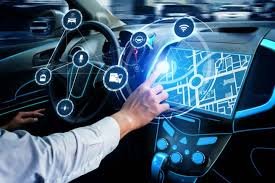Top 5 Advanced Features in Modern Car Electronics
Updated: December 30, 2024
30
Introduction to Modern Car Electronics
Top 5 Advanced Features in Modern Car Electronics.The world of automotive technology has evolved rapidly, integrating advanced electronics that redefine the driving experience. Modern car electronics enhance safety, convenience, and entertainment while improving vehicle performance. This article explores the top five features that make today’s cars smarter and more efficient.
Advanced Driver Assistance Systems (ADAS): Enhancing Safety
ADAS encompasses features like adaptive cruise control, lane-keeping assist, and automatic emergency braking. These technologies use sensors and cameras to monitor surroundings, reducing the risk of accidents and providing drivers with real-time support.
Fully Integrated Infotainment Systems

Modern infotainment systems are a blend of connectivity, entertainment, and navigation. With voice commands, touchscreens, and smartphone integration, drivers can access apps, control music, and navigate effortlessly, enhancing convenience and reducing distractions.
Autonomous Driving Capabilities
Autonomous driving technology is transforming cars into intelligent machines. With features like autopilot modes and traffic jam assist, vehicles can handle tasks like steering, accelerating, and braking, making long drives more comfortable.
Wireless Charging and Connectivity
Seamless wireless charging and connectivity options ensure that passengers can charge devices and stay connected without tangled wires. Bluetooth, NFC, and Wi-Fi connectivity have become standard, supporting a hands-free experience.
Over-the-Air (OTA) Updates for Software
OTA updates allow car manufacturers to enhance vehicle software remotely, delivering new features, improving performance, and addressing bugs. This ensures vehicles stay up-to-date without requiring service center visits.
Enhanced Vehicle Security Systems
Modern cars are equipped with biometric authentication, remote locking, and real-time tracking. These features deter theft and allow owners to monitor and secure their vehicles through mobile apps.
Advanced Head-Up Displays (HUDs)
HUDs project essential information, such as speed and navigation, onto the windshield, allowing drivers to keep their eyes on the road. Some systems even offer augmented reality (AR) features for enhanced situational awareness.
Vehicle-to-Everything (V2X) Communication
V2X technology enables vehicles to communicate with other cars, infrastructure, and pedestrians. This innovation improves traffic flow, enhances safety, and supports the development of smart cities.
Smart Climate Control Systems
Advanced climate control systems automatically adjust cabin temperature based on external conditions and passenger preferences. Some systems even purify air and reduce allergens for a healthier environment.
Regenerative Braking for Energy Efficiency
Electric and hybrid vehicles utilize regenerative braking to convert kinetic energy into electrical energy, extending battery life and improving overall efficiency.
Adaptive Lighting Systems
Adaptive headlights adjust their intensity and direction based on speed, road conditions, and steering angle, improving visibility during night driving and adverse weather.
Real-Time Traffic and Navigation Systems
With real-time updates on traffic, weather, and road conditions, modern navigation systems help drivers avoid delays and optimize their routes for a smoother journey.
Personalization Through AI and Machine Learning
Cars equipped with AI can learn driver preferences, such as seat adjustments, music preferences, and driving patterns, offering a customized driving experience.
Future of Car Electronics: What Lies Ahead
The future of car electronics points towards fully autonomous vehicles, enhanced connectivity through 5G, and sustainable energy solutions. Innovations in AI, IoT, and battery technology will continue to reshape the automotive landscape.
Conclusion
Modern car electronics have transformed vehicles into sophisticated machines that prioritize safety, comfort, and efficiency. These advancements reflect a blend of cutting-edge technology and automotive engineering, setting the stage for a smarter and more sustainable future.
This comprehensive exploration of the top five advanced features in modern car electronics highlights the technological progress and its impact on everyday driving.
Please Write Your Comments